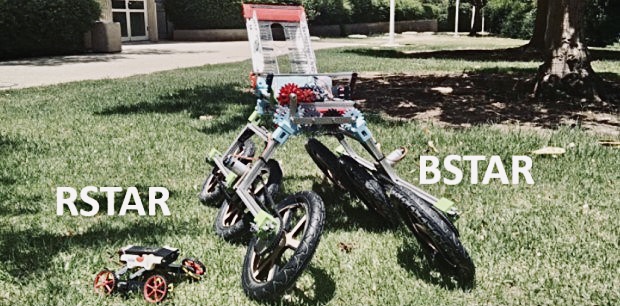
Several years ago, scientists from Ben-Gurion University created a compact robot - Rising STAR (RSTAR). Now he has a partner with a similar design - Big STAR (BSTAR), but the size of the new robot is 6 times larger. The tandem is expected to increase productivity, improve the versatility of robots and make them less vulnerable. RSTAR and BSTAR will be used in search and rescue operations when movement is required on off-road and rough terrain.
The STAR robots were created by scientist David Zarrouk and colleagues from Ben-Gurion University. In his first designs, Zarruk paid maximum attention to the autonomy of structures. The first STAR versions turned out to be really quite autonomous and maneuverable. Robots are easily transformed depending on environmental conditions. So, RSTAR has rotors - it can fly around obstacles. In addition, the robot has inflatable swimming tanks. Seeing that the design was successful, the development team decided to go further. As a result, RSTAR has an older brother - BSTAR.
BIG STAR features
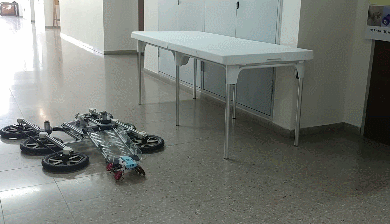
The BSTAR robot has the following characteristics:
- structure movement speed up to 1.4 m / s;
- robot payload> 5 kg;
- length of the structure from the rear wheel axis to the front wheel axis - 82.5 cm;
- retractable "tail" for carrying RSTAR;
- sliding structure;
- minimum folded height - 21 cm;
- 2 lithium polymer batteries with a capacity of 5200 mAh;
- weight - 9.8 kg.
The robot is capable of moving over rough terrain. The synergy between BSTAR and RSTAR is expected to increase their navigation and obstacle clearance capabilities. In addition, a large robot can serve as a charger for a tiny RSTAR.
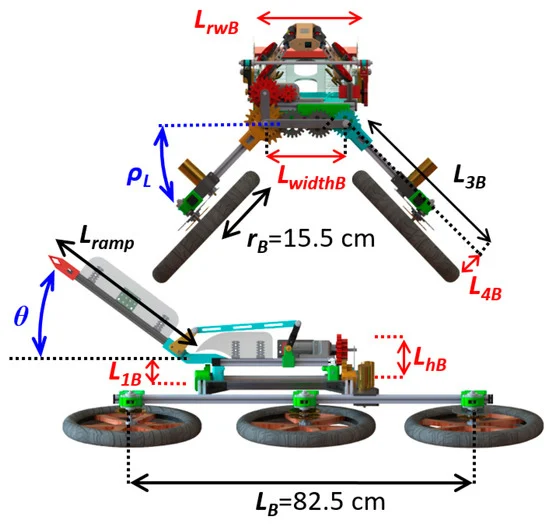
robot is suitable for transporting a large volume of payload: batteries, cameras, communications equipment and other sensors for search and rescue operations.
The robot is controlled by an Arduino Uno controller and two RobotClaw ECS controllers.
The first Israeli star
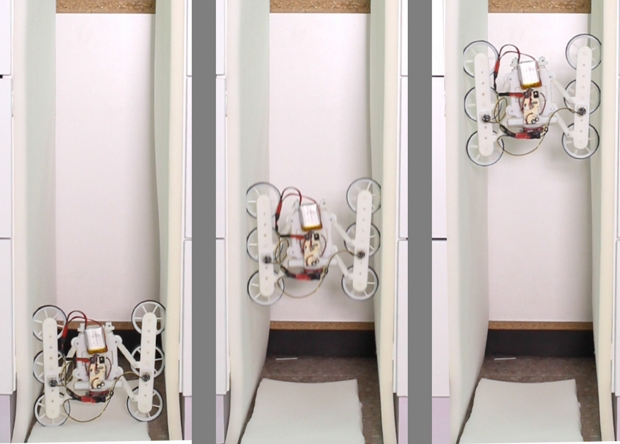
Multifunctional robot RSTAR appeared in 2018. Due to adaptive design changes, it can move on horizontal and vertical surfaces, as well as crawl or ride on wheels. The robot quickly adapts to external conditions: it can change the angle between the wheel frames, move them parallel to the body back and forth.
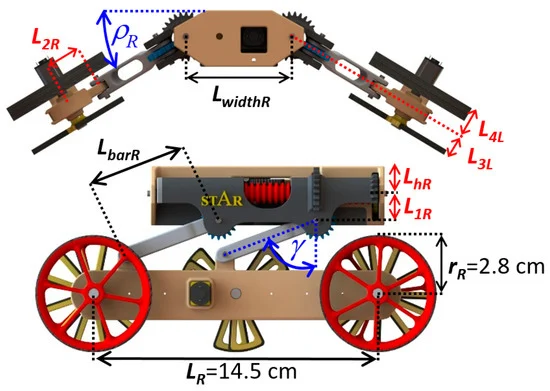
In addition, RSTAR can change the center of gravity. He can drive over an obstacle that is too high for him, and then move the center and overcome it safely.
Due to the fact that the robot has the extension mechanism with four rods, it can widen the distance between the body and legs and move between walls.

To increase mobility, the robot can be equipped with wheels or spoked supports. He can run upside down and, with the help of a snail's gait, crawl over obstacles that are larger than the diameter of his wheels.
The robot is equipped with one 800 mAh LiPO battery, but there are plans to make it more autonomous. The minimum height of the maneuverable robot is 3.5 cm, so it can navigate very narrow and hard-to-reach places. The maximum speed of the robot is up to 0.8 m / s. Construction weight - 0.38 kg.
Union of two stars
On the one hand, BSTAR and RSTAR have similar designs, only made in a scale of 6 to 1. However, due to the large size of the BSTAR, some of its parts had to be replaced .
BSTAR uses a metal frame, while RSTAR uses a plastic one.
An important new design element of the robot is its retractable "tail" - a movable platform at the rear. The platform can change the angle of inclination in the negative and positive directions. The main purpose of the "tail" is to carry the tiny RSTAR. A total of 3 "robotic children" can fit on the parent site.
The site can be used in various cases for additional maneuvers. For example, RSTAR, entering the BSTAR site, is able to inspect obstacles from a height.
As mentioned above, the baby is charged from the battery of its “relative”.
As planned, the collaboration of two multifunctional robots should significantly increase their productivity, versatility, increase the speed of terrain exploration and expand the range of possible operations.
